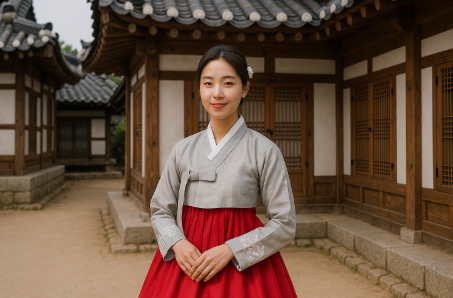South Korea, a nation steeped in rich traditions, offers a vibrant tapestry of contemporary and historical music. From the resonant sounds of ancient instruments to the high-energy beats of K-pop, Korean music encompasses a diverse range of styles and influences. This article explores the musical landscape of Korea, offering insights into its unique characteristics and evolution over time.
The Richness of Traditional Korean Music
Traditional Korean music, often referred to as Gugak, encompasses a variety of styles and instruments that have been passed down through generations. It features both vocal and instrumental components, typically used to accompany dance, theater, and religious rituals. Pansori is a notable style of vocal music characterized by one singer and a drummer, narrating stories through powerful vocalizations. The sound of the gayageum, a string instrument, offers a distinct mellowness, often accompanied by the haegeum, a two-stringed fiddle. Together, these instruments create a hauntingly beautiful soundscape that is uniquely Korean.
Evolution of Modern Korean Music
In the 20th century, Korean music began to incorporate Western influences. The introduction of American pop and classical music shaped new genres, such as trot, a genre advent in the Japanese colonial period that combined traditional Korean tunes with Western melodies. As Korea underwent rapid industrialization and modernization, composers experimented with various styles, eventually leading to the unique blend that defines much of modern Korean music today.
K-Pop and Its Global Impact
K-pop, short for Korean pop music, has taken the world by storm, shaping global music trends with its catchy music, intricate choreographies, and visually appealing music videos. Groups like BTS, BLACKPINK, and EXO have transcended cultural barriers, achieving unprecedented international success. The rise of K-pop has not only boosted Korea’s cultural export but has popularized Korean culture, language, and style, contributing to the phenomenon known as the Korean Wave or ‘Hallyu.’
The table below provides a brief comparison of traditional and modern Korean music elements:
| Element | Traditional Korean Music | Modern Korean Music (Including K-Pop) |
|---|---|---|
| Instruments | Gayageum, Haegeum, Janggu | Guitar, Synthesizer, Drums |
| Characteristics | Melodic, Lyrical | Rhythmic, Energetic |
| Performance | Solo or Small Ensembles | Large Groups or Bands |
| Influence | Jyong, Shamanism | Western Pop, Hip-Hop |
Cultural Significance of Music in Korea
Music plays a significant cultural role in Korea, acting as a historical record and a means of storytelling. Traditional music often accompanies rites and celebrations, serving as a link to Korea’s heritage. Modern music, on the other hand, embodies the dynamic spirit and creativity of contemporary Korean society. Both forms are expressions of identity, community, and artistic vision, reflecting the times and the shifts within society.
Music as a Vehicle for Cultural Exchange
With the global success of K-pop and traditional music festivals gaining international attention, music has become a powerful medium for cultural exchange. Korean music festivals invite performers from around the world, creating a melting pot of sounds and styles. The global audience’s enthusiasm for Korean music has sparked curiosity, leading to increased interest in learning the Korean language and exploring Korean culture further.
FAQ
Q: What is Pansori?
A: Pansori is a traditional Korean genre of musical storytelling performed by a vocalist and a drummer, recognized for its emotive narratives and powerful vocalizations.
Q: How did K-pop become so popular?
A: K-pop’s popularity can be attributed to its catchy music, high-quality production, innovative use of digital platforms, and the strong presence of fandoms worldwide.
Q: Are traditional and modern Korean music considered distinct, or do they influence each other?
A: While they are distinct in style and presentation, there is cross-influence where modern artists incorporate traditional elements, helping preserve and innovate musical traditions.
Summary
- Traditional Korean music encompasses diverse styles such as Gugak and Pansori, involving unique instruments like gayageum and haegeum.
- Modern Korean music, including K-pop, is a fusion of traditional elements and Western influences, gaining global recognition.
- Both traditional and modern music hold significant cultural value, reflecting Korea’s history and contemporary society.
- Korean music, especially K-pop, has become a significant cultural export, fostering global cultural exchange and interest in Korea.
#KoreanMusic #Tradition #Kpop #Culture #Pansori #Gugak #BTS #BLACKPINK #CulturalExchange #MusicFestivals #KoreanWave #Hallyu #Korea #Gayageum #Haegeum #CulturalHeritage #Art #Performance #GlobalMusic #ArtisticExpression #Heritage #Melody #Rhythm #Janggu #Shamanism #Modernization #Innovation #KoreanCulture #MusicIndustry #GlobalImpact #MusicGenres
